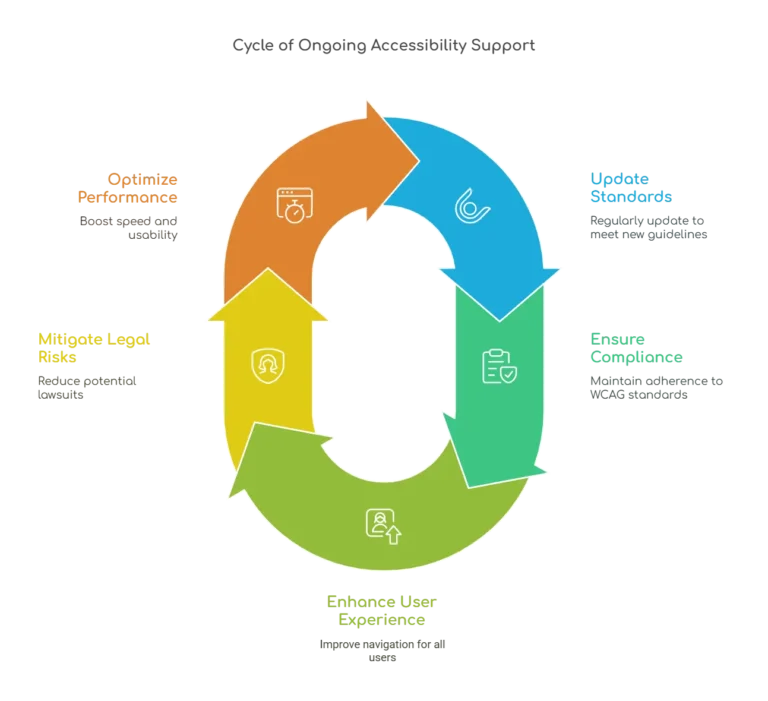SEO analytics is the compass guiding your online success. By mastering SEO basics, including backlinks, webmaster tools, and keyword ranking, you can propel your website to the top of search engine results pages (SERPs) in digital marketing. This involves keyword research, on-page optimization, link building, and backlinks. However, without analytics, it’s like navigating a ship in the dark. Analytics sheds light on crucial metrics such as organic traffic, user behavior, conversion rates, landing pages, backlinks, and search engines. It’s not just about understanding your own performance; it’s about gaining a competitive edge through big data analytics, goals, and critical metrics. Analyzing competitor data, search engine analytics report, and backlinks unveils opportunities for improvement and growth.Embracing SEO analytics is a necessity for those aiming to thrive in the online arena and track clients’ bounce rate.
Understanding SEO Analytics
SEO analytics involves tracking various key metrics such as bounce rate, sessions, and page performance to evaluate the performance of a website. These metrics include organic traffic, data analytics, and page. Another crucial metric is the bounce rate, indicating the percentage of visitors who navigate away from a site after viewing only one page. Assessing the average session duration and time provides insights into how long visitors spend on a site, reflecting user engagement. Lastly, analyzing search engine analytics helps measure the effectiveness of converting visitors into customers or leads.
Understanding these key metrics, such as data analytics, is essential for gauging the success of SEO strategies and identifying areas that require improvement. For instance, if an e-commerce website experiences high organic traffic but low conversion rates, data analytics may be used to track issues with product pages or checkout processes needing optimization. Similarly, if there’s a high bounce rate accompanied by short average session durations, it could signify ineffective content or poor user experience.
Segmentation analysis allows marketers to track clients’ preferences and behaviors by grouping data based on specific criteria such as demographics or behavior patterns. Funnel analysis focuses on mapping out users’ journey stages – from initial interaction to conversion – helping track and identify potential drop-off points in the customer acquisition process. Cohort analysis involves studying groups of clients sharing common characteristics over time periods; this aids in understanding user retention and behavioral changes within specific cohorts.
Importance of SEO Analytics
Effective SEO analytics can significantly impact a business’s online presence, revenue generation, and page ranking. Improved visibility in search results leads to increased organic traffic and potential customers. For instance, by analyzing which keywords clients are using to drive the most traffic to their page, businesses can focus their efforts on those specific areas to attract even more visitors.
Optimized conversion rates through data-driven decision making can boost business growth for clients. By understanding user behavior through analytics, businesses can tailor their content and offerings to better meet customer needs, thus increasing the likelihood of conversions on their page. This means that with the right insights from SEO analytics, companies have a higher chance of turning website visitors into paying customers by using the page.
Decision Making
SEO analytics use page data to help businesses make informed decisions based on data insights. It enables prioritization of SEO efforts, allocation of resources, identification of areas for improvement, and use of page. For example, if an analysis reveals that certain web pages are not performing well in terms of attracting organic traffic, businesses can use resources to optimize these pages for better results.
Data-driven decision making minimizes guesswork and maximizes the effectiveness of SEO strategies by using page data. Instead of relying on assumptions or trends without concrete evidence, companies can use comprehensive SEO analytics reports to base their actions on real data obtained from page.
Strategy Refinement
Analyzing SEO data allows businesses to use the page and refine their strategies for better results. Identifying underperforming keywords is crucial as it helps companies understand which terms are not resonating with their target audience on page so they can adjust accordingly. Optimizing content based on keyword performance and use ensures that websites remain relevant in search engine rankings.
Improving user experience is another area where refinements based on SEO analytics play a vital role—by identifying how users engage with a website (e.g., bounce rates or time spent per page), companies gain valuable insights into what changes need to be made to enhance overall user experience.
Google Search Console Insights

SEO analytics involves monitoring key metrics over time. It helps assess the impact of SEO efforts, track progress towards goals, identify trends or anomalies, and use page. By tracking page performance, businesses can make necessary adjustments to optimize their SEO strategies. For example, if a business notices a drop in organic traffic on a specific page after implementing certain changes on their website, they can use performance tracking to pinpoint the cause and adjust their strategy accordingly.
Analyzing performance also provides insights into user behavior and preferences. For instance, if a business sees an increase in engagement metrics such as average session duration or pages per session following the implementation of new content optimizations, it indicates that those changes resonated positively with users.
Understanding these patterns allows businesses to replicate successful strategies and refine underperforming ones based on concrete data rather than guesswork.
Analyzing search queries is crucial for gaining insights into what users are searching for related to a business’s products or services. By understanding popular search queries through SEO analytics, businesses can optimize website content and target relevant keywords more effectively. For instance, suppose an e-commerce store discovers through search query analysis that many users are searching for “best budget smartphones.” In that case, they can create targeted content around this topic to attract potential customers actively looking for affordable mobile devices.
Aligning with user intent is essential for improving visibility in search results. When businesses tailor their content according to what users are actively seeking online, they have better chances of ranking higher in search engine results pages (SERPs). This alignment not only drives organic traffic but also increases the likelihood of converting visitors into customers.
Monitoring site errors through analytics plays a critical role in identifying technical issues that may affect SEO performance. Common site errors include broken links, 404 pages, slow page load times, and crawl errors among others.
Unlock the full potential of your website with SEO Analytics. Contact us for more details
Fixing these site errors is paramount as it improves user experience by ensuring visitors encounter no dead ends while navigating the website; enhances search engine crawling by providing clear pathways for bots to index webpages; ultimately boosting SEO rankings due to improved overall website health.
Leveraging Google Analytics

Traffic Analysis
Traffic analysis is crucial. It involves examining the sources of website traffic, such as organic search, direct visits, referral links, or social media. Understanding these traffic sources helps allocate resources effectively and identify opportunities for growth. For instance, if a website receives a significant amount of traffic from social media platforms like Facebook and Instagram but minimal traffic from organic search, it might indicate an opportunity to focus more on optimizing social media content.
Analyzing traffic patterns also reveals user behavior and engagement levels. By identifying which pages attract the most visitors or have high bounce rates, webmasters can make informed decisions about improving content quality or enhancing user experience in those specific areas.
Behavior Metrics
Behavior metrics in SEO analytics measure how users interact with a website. These metrics include the average session duration, pages per session, and bounce rate. The bounce rate indicates the percentage of visitors who navigate away from the site after viewing only one page – a high bounce rate may suggest that certain landing pages need improvement.
By analyzing behavior metrics through tools like Google Analytics, webmasters gain insights into user engagement and satisfaction levels on their websites. For example:
- If the average engagement time is low across all pages compared to industry benchmarks,
- Or if users tend to visit multiple pages during each session, It could indicate that the site’s content is engaging enough to keep visitors exploring further.
Conversion Data
Conversion data tracks the number of desired actions taken by users on a website – such as purchases, form submissions or sign-ups. Analyzing this data provides invaluable insights into evaluating SEO strategies’ effectiveness in driving desired outcomes. For instance:
- A sudden drop in form submissions following changes made to landing page design,
- Or an increase in e-commerce sales after implementing targeted keyword optimization, Can help businesses understand how different SEO efforts directly impact conversion rates.
Optimizing conversion rates based on data insights improves overall business performance by ensuring that SEO strategies are aligned with specific business goals and objectives.
Effective SEO Reporting
Custom dashboards in SEO analytics are like personalized control panels for businesses. They allow companies to create tailored views of the most relevant SEO metrics, such as website traffic, keyword rankings, and user engagement. For instance, a business focusing on increasing organic search traffic can customize its dashboard to display metrics related to organic search performance. This customization provides a quick snapshot of key performance indicators aligned with specific goals. By streamlining data analysis and decision-making processes, custom dashboards empower businesses to take proactive measures based on real-time insights.
Businesses rely on these custom dashboards within analytics platforms like Google Analytics or other specialized tools because they offer flexibility and efficiency in monitoring various aspects of their online presence. For example, an e-commerce company may set up a custom dashboard that emphasizes conversion rates and revenue generated from different marketing channels or campaigns. This allows them to quickly identify which marketing channel or campaign is driving the most valuable traffic and adjust strategies accordingly.
Ahrefs for SEO Enhancement
SEO analytics like Ahrefs provide valuable insights into a website’s backlink profiles, which are essentially the external links directing traffic to the site. By analyzing backlink profiles, businesses can gauge both the quality and quantity of inbound links. This analysis is crucial because it allows them to identify areas for improvement and strategic link building opportunities. For instance, if a business discovers that its competitors have high-quality backlinks from authoritative websites, it can use this information to develop a similar strategy for its own SEO enhancement.
Monitoring backlinks through SEO analytics tools like Ahrefs also enables businesses to keep track of their progress in acquiring new links and removing harmful ones. This proactive approach aids in maintaining or improving search engine rankings over time.
For example:
- A company using Ahrefs may find that many of its competitors have secured backlinks from reputable industry publications. Armed with this knowledge, the company could then focus on reaching out to these same publications to secure similar backlinks for itself.
Incorporating competitor analysis into SEO analytics involves evaluating how competitors are performing online, understanding their strategies, and assessing their overall presence. By leveraging tools such as Ahrefs for competitor analysis, businesses can gain deep insights into what works well within their industry niche and identify potential gaps they can fill.
Understanding competitor strengths and weaknesses through comprehensive competitor analysis helps companies pinpoint areas where they need improvement or differentiation in order to stand out in search results.
For instance:
- Through competitor analysis using Ahrefs data, a business might discover that one of its main rivals has achieved significant success by targeting long-tail keywords related to specific customer pain points. Armed with this knowledge, the business could adjust its own keyword strategy accordingly.
Utilizing keyword tracking capabilities offered by SEO analytics platforms such as Ahrefs allows businesses to monitor how well their targeted keywords are performing in search engine results pages (SERPs). This monitoring provides essential data about keyword positions over time so that companies can evaluate the effectiveness of their SEO efforts.
By adjusting keyword strategies based on tracking data provided by tools like Ahrefs, businesses can optimize their content for better visibility on search engines.
For example:
- If a company notices through keyword tracking that certain terms related to its products or services consistently rank lower than expected despite optimization efforts, it may decide to revamp its content strategy around those particular keywords.
Improving SEO with Analytics
SEO analytics provides valuable insights into a website’s performance, helping businesses identify areas for improvement. By analyzing search engine analytics reports, companies can pinpoint issues such as slow website speed, poor mobile responsiveness, or subpar content quality. For example, if the analytics report reveals that a website has high bounce rates on certain pages, it indicates that visitors are not finding the content engaging or relevant.
Improving these aspects based on webmaster tools and other SEO analytics leads to better search engine rankings and enhanced user satisfaction. When businesses continuously tweak their websites according to the insights gained from SEO analytics, they witness tangible improvements in their online visibility and overall performance.
Content Optimization
Another crucial aspect of leveraging SEO analytics is optimizing website content to align with user intent and search engine algorithms. Through comprehensive analysis of content performance using search engine analytics, businesses can identify high-performing pages, keyword gaps, and areas for improvement. For instance, if certain keywords consistently drive traffic to a website but are not effectively incorporated into the existing content, it presents an opportunity for optimization.
By optimizing content based on actionable insights derived from search engine analytics reports, businesses can significantly enhance organic visibility and improve user engagement. This process involves strategically integrating relevant keywords into the existing content while ensuring that it remains informative and valuable to visitors.
Local SEO Tactics
Local SEO tactics play a pivotal role in enhancing a business’s visibility for location-based searches. Utilizing local search data provided by SEO analytics, companies can tailor their strategies to target specific geographical areas and attract relevant local customers. For example, if an analysis of local search data reveals that there is significant demand for certain products or services in a particular area, businesses can customize their offerings accordingly.
Implementing tailored local SEO tactics based on actionable insights obtained from search engine analytics reports enables businesses to improve their rankings in local searches while effectively catering to the needs of nearby consumers.
Strategic SEO Analytics Planning
Measurement Tools
Measurement tools in SEO analytics are essential for accurate data collection and analysis. These tools, such as Google Analytics, Google Search Console, and third-party platforms, play a crucial role in understanding website performance and user behavior. By choosing the right measurement tools, businesses can ensure reliable and comprehensive SEO analytics.
For instance, Google Analytics provides valuable insights into website traffic sources, audience demographics, and user engagement. On the other hand, Google Search Console offers information on keyword performance, indexing status, and click-through rates from search results. Third-party platforms like SEMrush or Ahrefs provide additional data on competitor analysis, keyword research, and backlink profiles.
By utilizing these measurement tools effectively to gather pertinent data about website performance and user interactions with the site’s content helps businesses make informed decisions regarding their SEO strategies.
Relevant Metrics
Focusing on relevant metrics is vital for aligning strategies with business goals. Relevant metrics include organic traffic volume, conversion rate (the percentage of visitors who complete a desired action), keyword rankings for targeted search terms or phrases relevant to the business niche or industry verticals it serves -and backlink quality that reflects the authority of websites linking back to your domain.
For example:
- Organic traffic volume indicates how much of a site’s total traffic comes from non-paid search results.
- Conversion rate shows how effective a website is at converting visitors into customers or leads.
- Keyword rankings help identify which keywords are driving organic traffic.
- Backlink quality assesses the credibility of external links pointing to a website.
Focusing on these relevant metrics enables businesses to gain actionable insights for optimizing their SEO strategies based on real-time data trends rather than assumptions or guesswork.
Reporting Dashboards
Reporting dashboards in analytics consolidate key metrics into visual representations for easy monitoring by stakeholders within an organization. These dashboards offer a comprehensive overview of website performance across various dimensions such as traffic sources (organic vs paid), device types (desktop vs mobile), geographic locations where users are located when they visit your site -and conversion rates showing what percentage converted after visiting one page versus another page before making any purchase decision during their session duration spent browsing through different pages within your domain’s web properties over time periods chosen by administrators responsible for managing reporting processes related specifically towards digital marketing efforts being made via online channels only without including offline media channels like TV ads etcetera…
Continuous SEO Improvement
Site Health Monitoring
Site health monitoring is crucial for SEO analytics. It involves analyzing technical aspects like crawl errors, broken links, duplicate content, and site speed issues. These factors directly impact a website’s performance and search engine rankings. For example, if a website has multiple broken links or slow loading pages, it can negatively affect its visibility in search results.
Regular site health monitoring ensures that the website functions optimally and maintains improved SEO rankings. By addressing issues promptly through continuous monitoring, businesses can enhance user experience and maintain search engine visibility.
- Benefits of Site Health Monitoring:
- Identifying and fixing crawl errors promptly
- Improving user experience by resolving broken links
- Enhancing site performance through faster load times
Domain Authority Check
Analyzing domain authority is an essential aspect of SEO analytics as it predicts a website’s ranking potential in search results. A high domain authority signifies credibility and strength to both users and search engines. By regularly checking domain authority metrics, businesses can gauge their website’s competitiveness within their industry.
Monitoring domain authority also allows companies to benchmark against competitors’ websites. This comparison provides valuable insights into areas where improvement is needed to boost SEO efforts effectively.
- Advantages of Domain Authority Check:
- Assessing the overall strength of the website
- Benchmarking against competitors for strategic improvements
- Understanding the potential ranking capability in search engine results
Regenerative Strategies
Regenerative strategies are pivotal in maintaining long-term success with SEO analytics efforts. Adapting to changes in search engine algorithms, industry trends, and user behavior is vital for sustained growth in organic traffic and rankings.
Conclusion
You’ve now grasped the vital role of SEO analytics in understanding your website’s performance and making informed decisions to enhance its visibility. Leveraging tools like Google Search Console, Google Analytics, and Ahrefs can provide valuable insights into keyword rankings, user behavior, and backlink profiles. Effective SEO reporting is not just about numbers but about extracting actionable insights for continuous improvement. By strategically planning and implementing SEO analytics, you can drive tangible results and stay ahead in the digital landscape. So, dive into your analytics data, tweak your strategies, and watch your SEO efforts soar!








